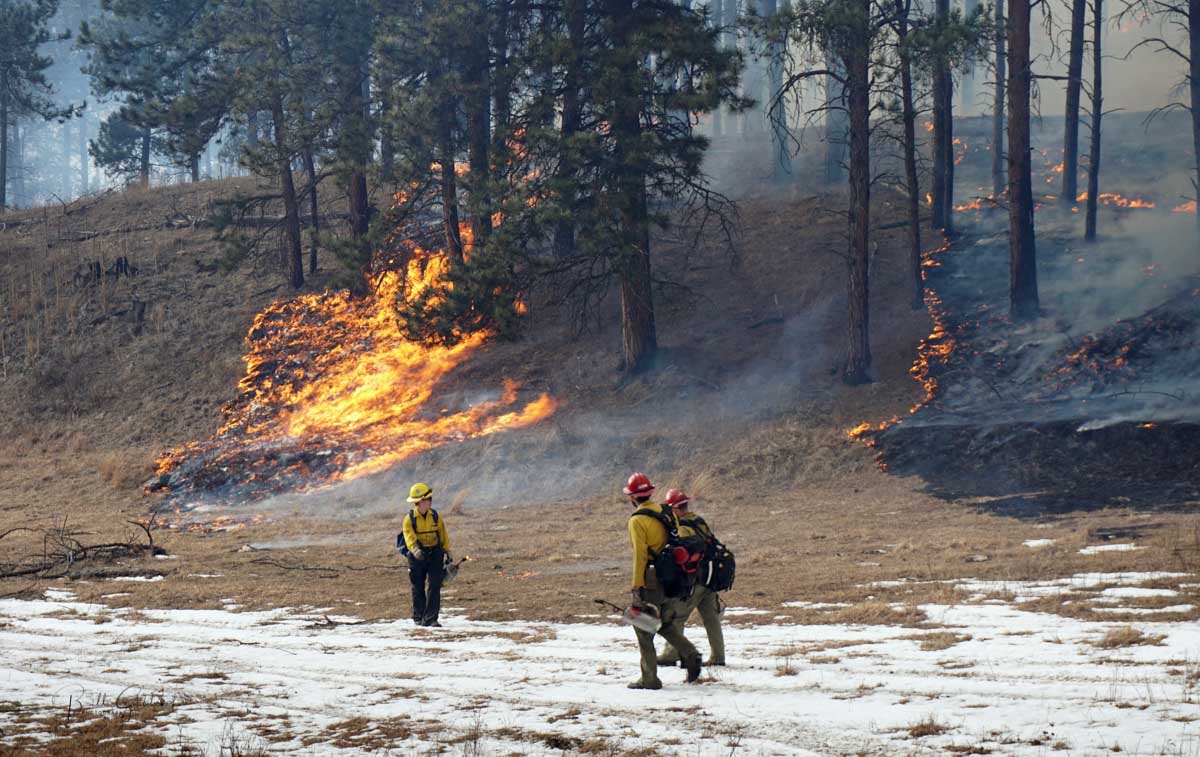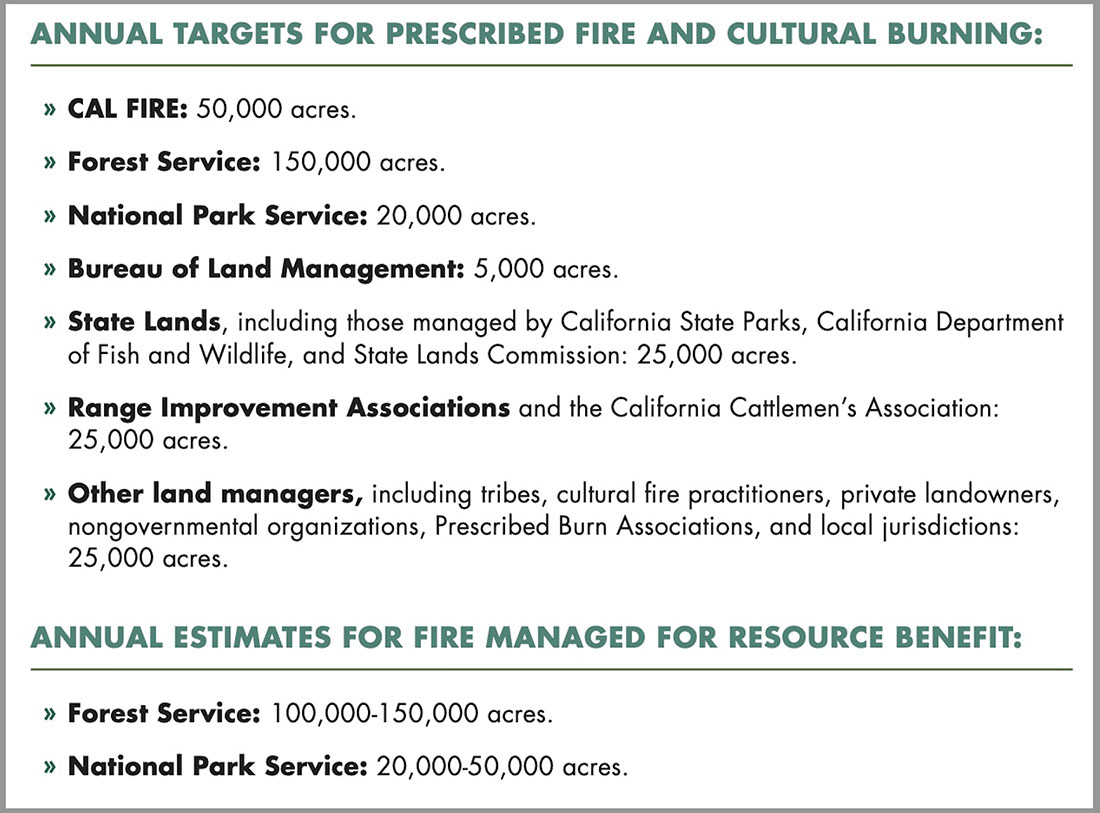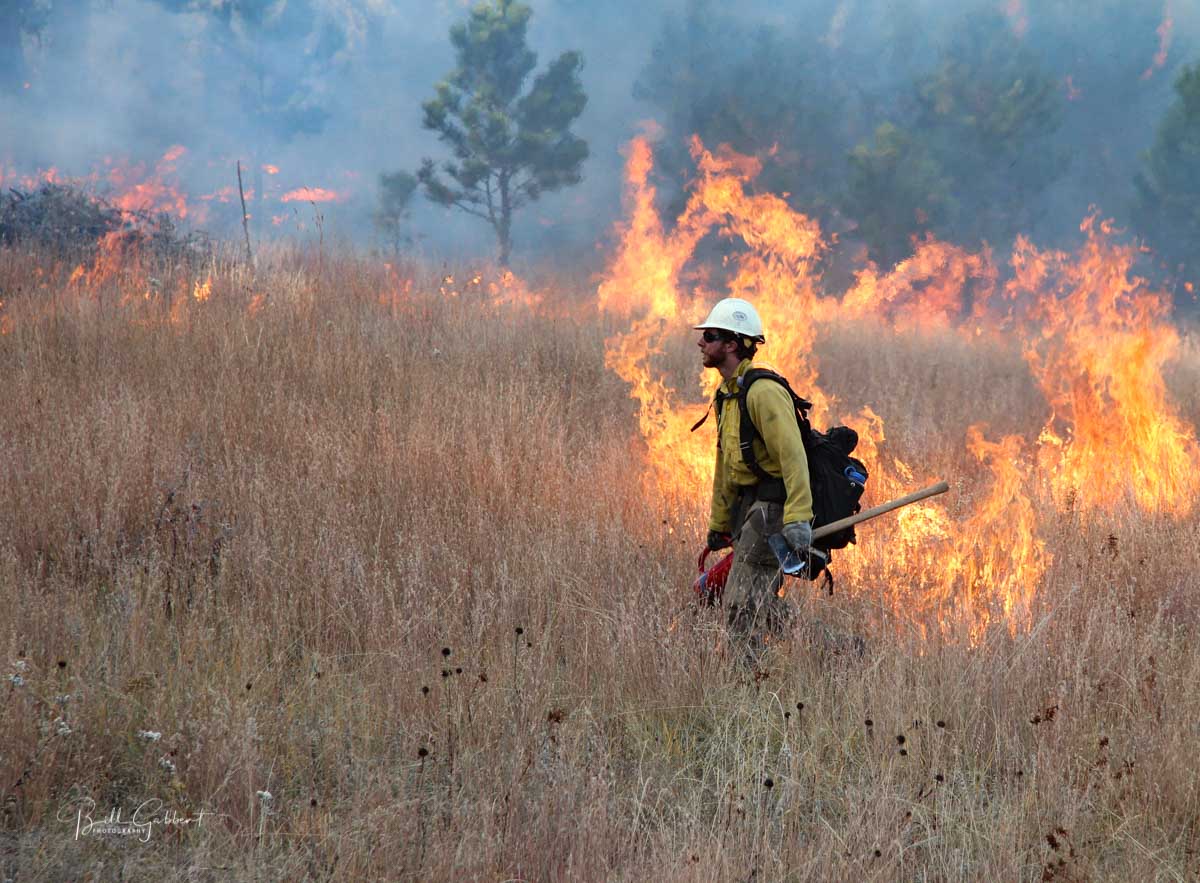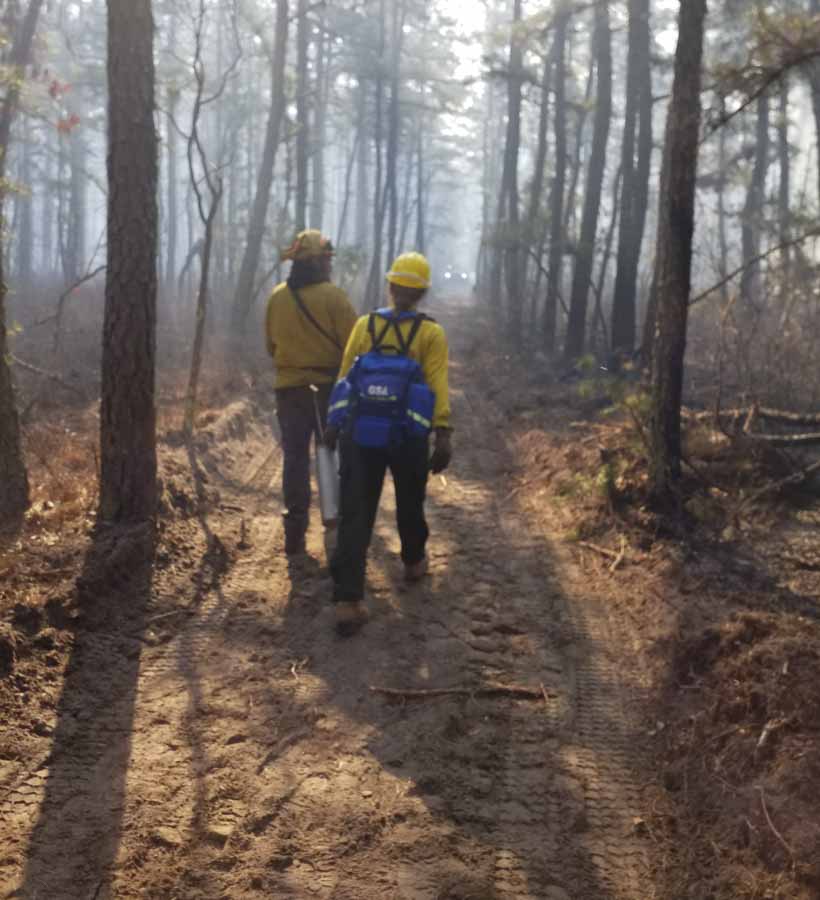
A group of state and federal land management agencies in California has established a plan to promote the use of “beneficial fire”, and by 2025 expect to treat up to 400,000 acres a year.
That is well short of the agreement the same agencies reached in 2018 to treat one million acres per year by 2025. In August, 2020 they recommitted to that same one million-acre target. The plan released last week restates the one-million goal on page 17, but on the following page says, “By 2025, land managers will seek to deploy beneficial fire on 400,000 acres annually, based on the following targets and estimates:”

The numbers above total 300,000 prescribed/cultural acres each year plus 120,000 to 200,000 acres of fire managed for resource benefit.
Beneficial fire, a term not widely used, is defined in the document as including prescribed fire, fire managed for resource benefit (less than full suppression of unplanned ignitions), and cultural burning by California Native American tribes.
Between 2017 and 2020, CAL FIRE and the US Forest Service completed or assisted with prescribed fire activities on approximately 80,000 acres annually, according to the plan released by the agencies last week. In the same period tribes, California State Parks, the National Park Service, local agencies, and private entities completed burns on tens of thousands of additional acres annually. The USFS and NPS also completed approximately 20,000 acres each year of fire managed for resource benefit. The amount of land thinned or converted into fuel breaks but not burned would add to that figure.
Doing some back of the envelope ciphering, let’s assume that during that four-year period about 120,000 acres were prescribed burned each year. Current estimates indicate that between 10 million and 30 million acres in California need some form of fuel reduction treatment. To use a middle ground number, if 20 million acres need to be treated on an average fire return interval of 20 years, for example, that works out to one million acres that need to be treated each year, about eight times the area treated every year recently. The actual average fire return interval should probably be less, especially considering that neglected areas will need both an initial entry burn and at least one subsequent burn before they can be restored to a sustainable fire regime and obtain maintenance status.

The plan released last week by the Governor’s Wildfire and Forest Resilience Task Force indicates that the state of California will begin managing some fires for resource benefit, major change in their policy. They will evaluate areas on state land where modified fire suppression strategies can be implemented, such as land trusts, ranches, and timber owners. Where appropriate and authorized by the state Legislature, CAL FIRE will use plans and agreements with land managers and landowners in order to allow unintentional ignitions to burn under predetermined and prescribed conditions, to accomplish resource benefits similar to prescribed fire.
The key elements of the plan include:
- Launching an online prescribed fire permitting system to streamline the review and approval of prescribed fire projects;
- Establishing the state’s new Prescribed Fire Claims Fund to reduce liability for private burners;
- Beginning a statewide program to enable tribes and cultural fire practitioners to revitalize cultural burning practices;
- A prescribed fire training center to grow, train, and diversify the state’s prescribed fire workforce;
- An interagency beneficial fire tracking system;
- Pilot projects to undertake larger landscape-scale burns; and
- A comprehensive review of the state’s smoke management programs to facilitate prescribed fire while protecting public health.
“This plan is vital to improve the health and resilience of the state’s forests, reduce wildfire risk of vulnerable communities, and increase stewardship by Native American fire practitioners,” said Task Force Co-Chair and U.S. Forest Service Regional Forester Jennifer Eberlien.
The plan, California’s Strategic Plan for Expanding the use of Beneficial Fire, March 2022, was developed by the Governor’s Wildfire and Forest Resilience Task Force. It can be downloaded here: (large 17 MB file).








